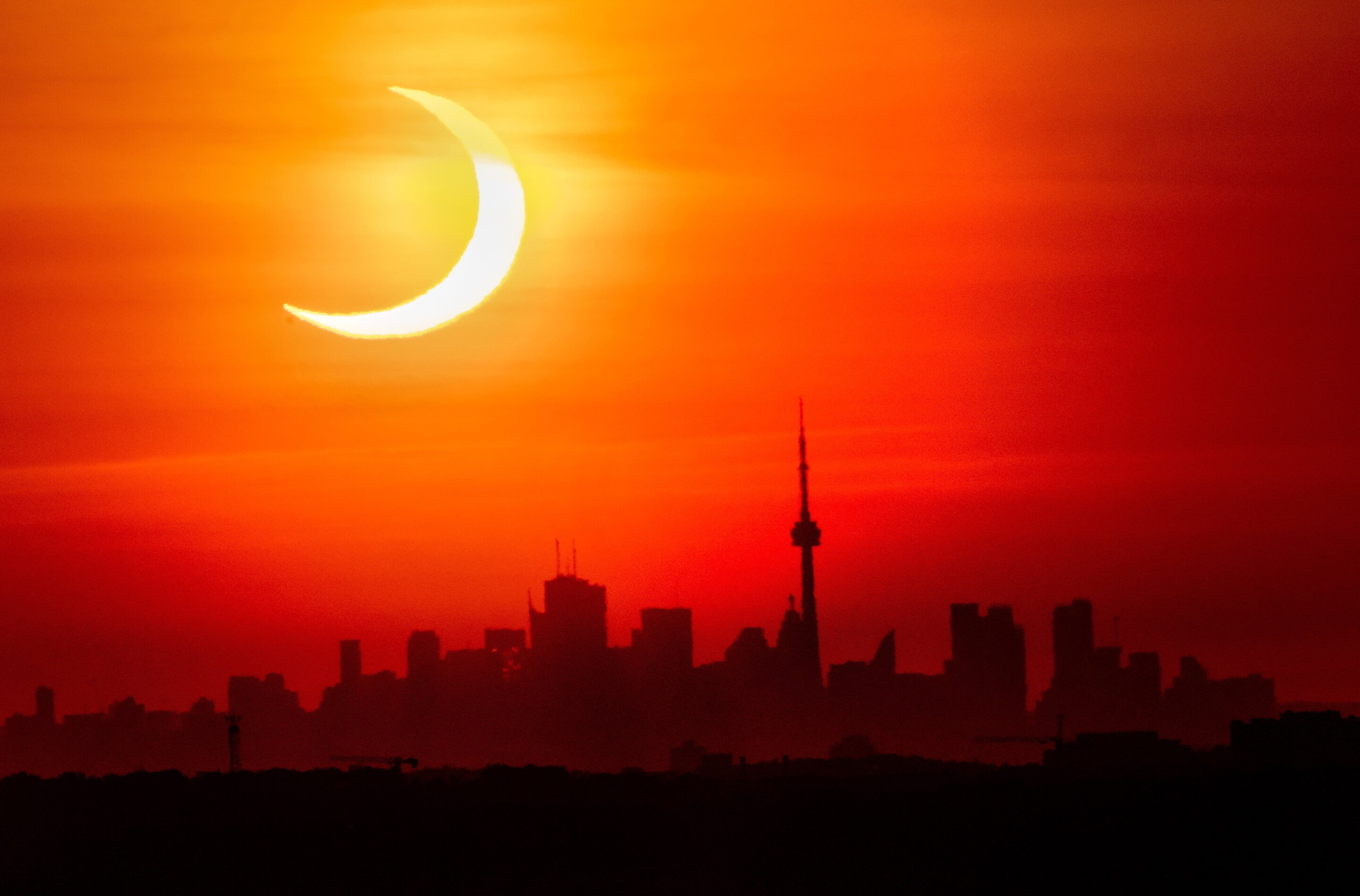A partial solar eclipse will be visible across Europe, western Africa, eastern North America, and northern Asia on Saturday, March 29.
Greenland and eastern Canada will experience the most significant coverage of the sun, but the eclipse will also be visible across Quebec, Western Europe, and parts of northwestern Africa, including Morocco, according to Auriane Egal of the Planetarium of Montréal.
A partial solar eclipse occurs when the moon passes between the sun and Earth, casting a shadow that only partially blocks the sun, creating a crescent shape. Unlike a total solar eclipse, there is no period of total darkness, meaning proper eye protection is required throughout the event.
“Eclipses are just a game of light and shadow played by the sun, moon, and Earth,” Egal said.
The timing of the eclipse varies by location. It will occur at sunrise for much of the Americas, late morning for western Europe and Africa, and in the afternoon for eastern Europe and northern Asia.
During the eclipse, the sun will gradually shrink to a crescent shape as the moon partially obscures it. The daylight may also dim slightly.
“It will feel like a particularly cloudy day,” said Juan Carlos Muñoz-Mateos of the European Southern Observatory. “You will still see a very bright crescent moon-shaped thing, which is basically what remains of the sun.”
Clear skies away from tall buildings and city lights will offer the best viewing conditions, especially in the Americas, where the sun may be rising during the eclipse. Experts recommend using certified eclipse glasses, available through local science museums or approved vendors listed on the American Astronomical Society’s website.
“There is no stage during a partial solar eclipse at which looking at the sun is safe,” Muñoz-Mateos warned.
For indirect viewing, a pinhole projector made from household materials or a colander can project the eclipse onto a surface. Crescent-shaped shadows may also appear under trees as sunlight filters through branches and leaves.
Another total lunar eclipse and a partial solar eclipse are expected in September, with the best solar eclipse views in Antarctica and New Zealand.
Solar and lunar eclipses occur between four and seven times per year, according to NASA, often in pairs. A total lunar eclipse turned the moon red in mid-March.

